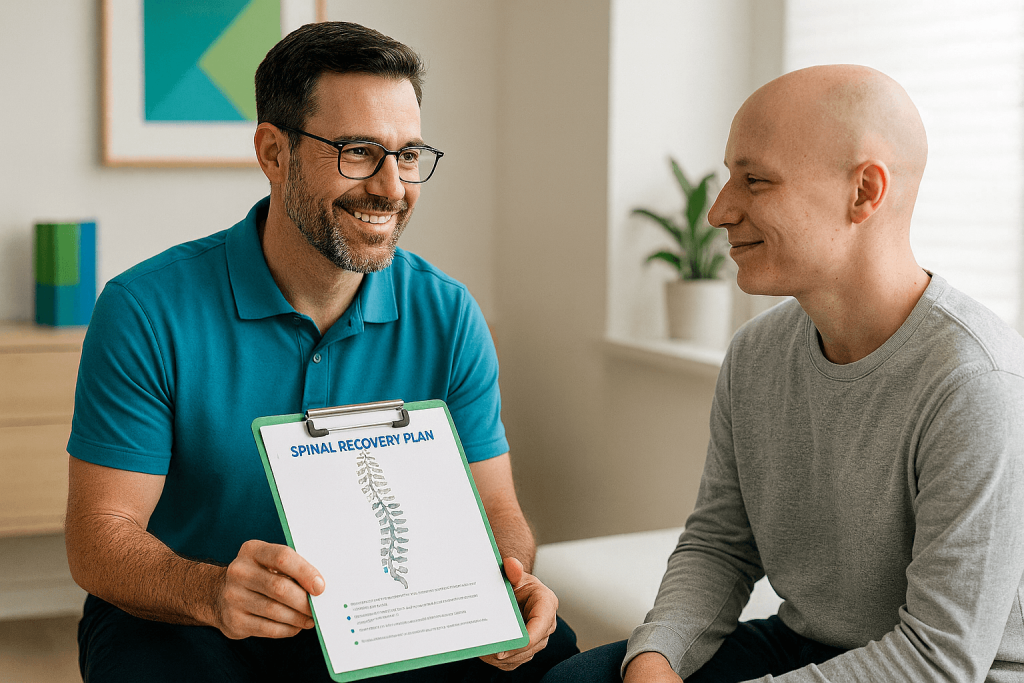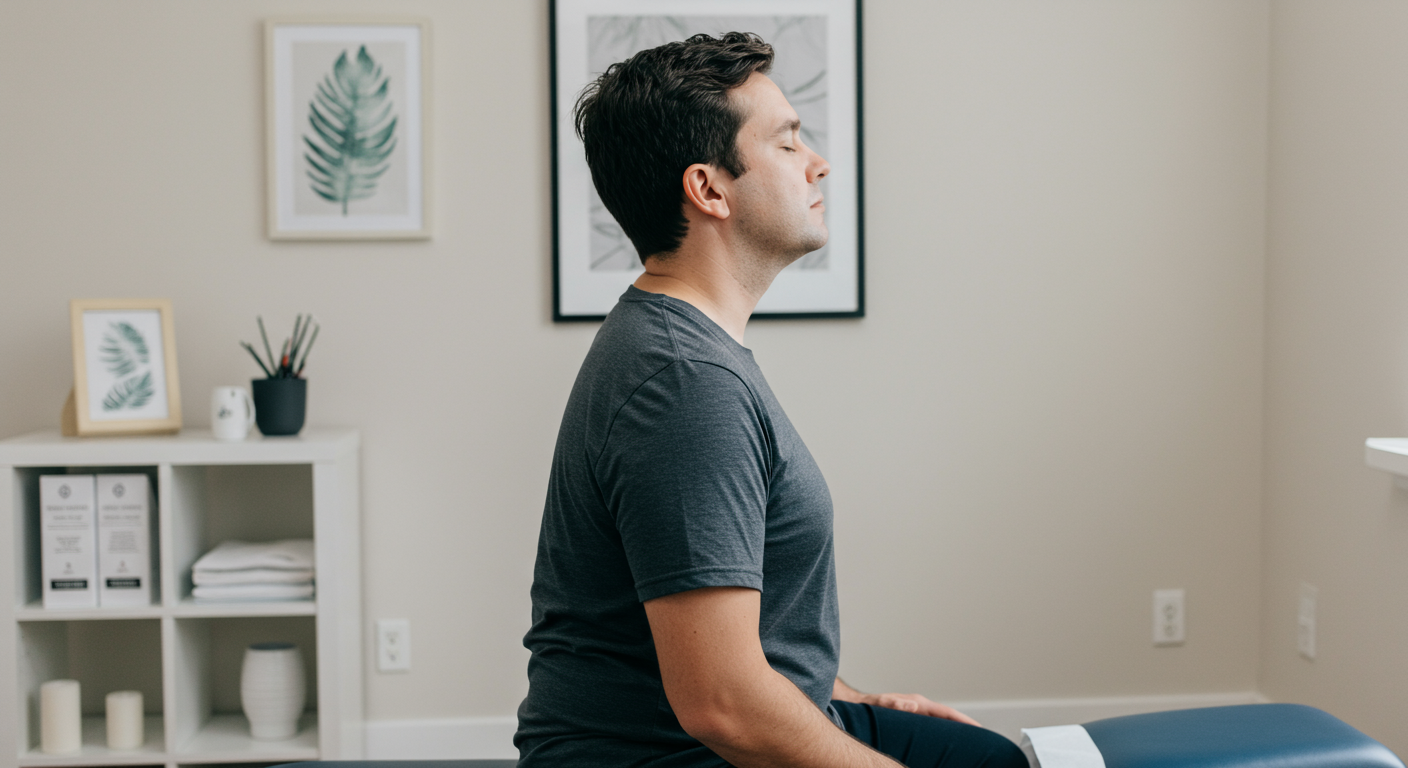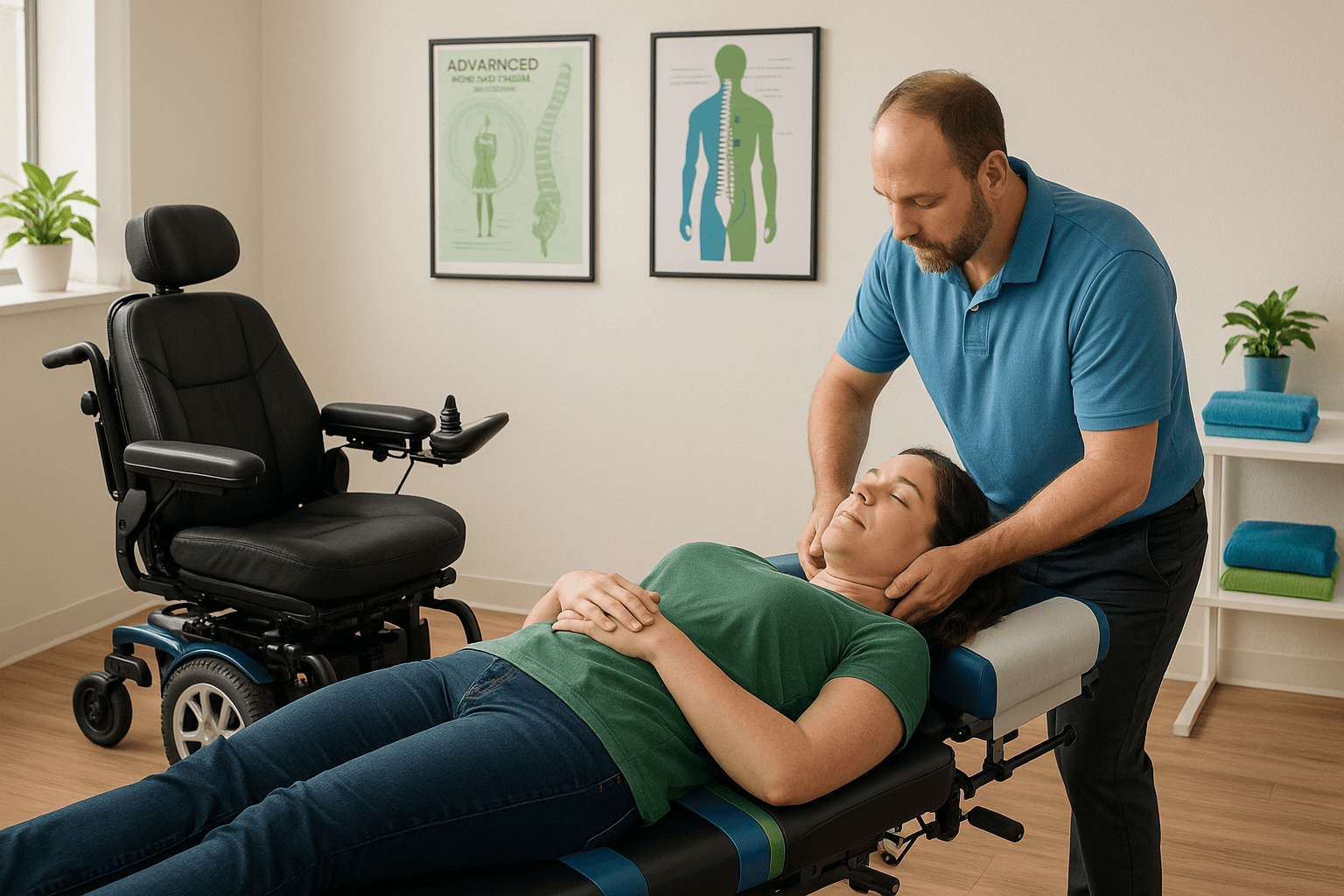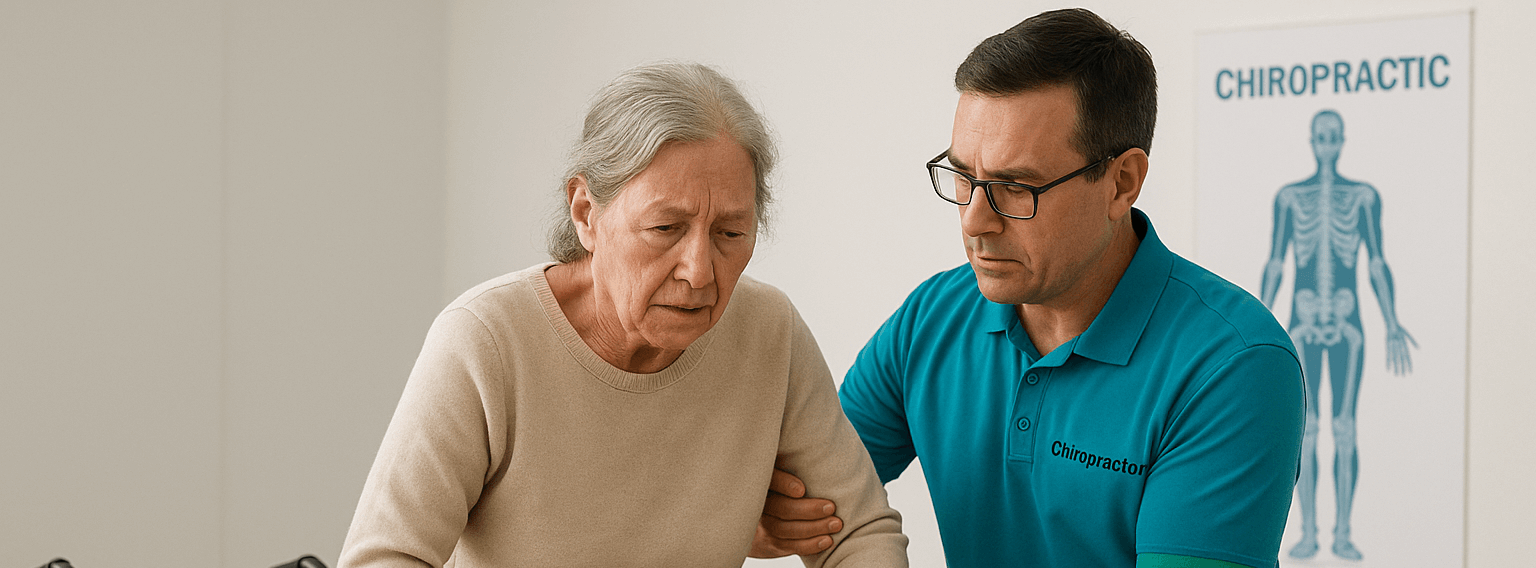Chiropractic care isn’t just about cracking backs or easing sore muscles. For cancer survivors dealing with the lingering effects of treatment—like fatigue, brain fog, or emotional lows—it can be a game-changer. This case study reveals how improving posture and spinal alignment can unlock not just pain relief, but sharper thinking, better mood, and more energy.
Jump to:
- TLDR – Quick Guide
- When “Brain Fog” and Pain Hold You Back, Posture Correction Can Help
- The Young Man’s Story
- The Chiropractic Check-Up
- The Care Plan
- The Results
- Why Did This Happen?
- Why This Case Matters
- The Role of Advanced BioStructural Correction™
- Final Thoughts
- Key Takeaways
- Frequently Asked Questions (FAQs)
TLDR – Quick Guide
- A 26-year-old cancer survivor came to chiropractic care for chronic thigh pain.
- The chiropractor identified scoliosis, postural imbalance, and spinal degeneration.
- Treatment involved 12 weeks of Advanced BioStructural Correction™ (ABC™).
- Unexpected results included clearer thinking, improved mood, and better energy levels.
- Case shows chiropractic can improve not just physical pain, but brain function and emotional health.

When “Brain Fog” and Pain Hold You Back, Posture Correction Can Help
Most people expect chiropractic to help with back or neck pain. But what about mental clarity, energy, or even recovering from the long-term effects of cancer?
This case study tells the story of a 26-year-old cancer survivor who came to a chiropractor for thigh pain—but left with so much more: better memory, clearer thinking, improved mood, more energy, and stronger physical performance.
The Young Man’s Story
At 21, he had beaten testicular cancer, but the journey left its mark. By age 26, he was training as an apprentice mechanic when he came to chiropractic care.
His main complaint was nagging thigh pain that had started four years earlier during a squat at the gym. His leg buckled, causing sharp pain that never fully went away.
Over time, the pain came and went. Sometimes it only lasted 20 minutes, but it was always there in the background, making exercise and daily life harder.
On top of that, his medical history was full of injuries:
- Broken collarbone and elbow as a child
- Fractured kneecap from a bike accident
- Toe and finger fractures
- Stress fractures in his foot
He wasn’t coming to the chiropractor expecting miracles—he just wanted help with his thigh.
The Chiropractic Check-Up
The chiropractor’s assessment found several key issues:
- Scoliosis (curved spine) with a 17° curve in both the mid- and lower back
- Uneven pelvis with an 8mm height difference
- Weakness in important stabilizing muscles like the glutes
- Trouble balancing with eyes closed
- Limited neck movement and pain with certain tests
He was also found to be in Phase One spinal degeneration at multiple vertebrae (C4, C6, T12, L5).
Clearly, his problem wasn’t just in the thigh—it was linked to his posture and nervous system.
The Care Plan
He started 12 weeks of chiropractic care with Advanced BioStructural Correction™ (ABC™).
The plan was simple:
- 2 visits per week for adjustments
- Exercises like walking, running, and swimming
- Focus on restoring alignment, posture, and stability
The goals were to:
- Correct spinal misalignments
- Stop degeneration from worsening
- Improve range of motion and balance
- Reduce thigh pain
The Results
By the end of the 12 weeks, the changes were impressive.
Physical Improvements
- Less thigh pain (though not gone yet)
- Improved flexibility
- Stronger posture and muscle function
- Better balance
But the biggest surprise wasn’t in his leg—it was in his mind.
Mental and Emotional Improvements
- Felt more relaxed and stronger
- Reported more energy
- Clearer thinking and memory
- Less “brain fog”
- Better sleep and mood
- Improved motivation and performance
He said his top three “wins” were:
- Less brain fog
- Better moods
- Normal motivation levels returning
He even noticed everyday differences, like remembering words and names that used to get stuck “on the tip of his tongue.”
Why Did This Happen?
At first glance, chiropractic helping memory and mood sounds surprising. But here’s why it makes sense:
- The nervous system controls everything. When the spine is misaligned, it can interfere with nerve signals.
- Posture affects energy and focus. Forward head posture and spinal stress put constant strain on the brain and body.
- Cancer survivors often struggle with low adaptability. Treatments like chemotherapy can affect the nervous system for years.
By improving his posture and reducing spinal stress, chiropractic likely helped his nervous system work more efficiently—giving him back energy and mental clarity.
Why This Case Matters
This case isn’t just about one young man—it highlights bigger ideas:
- Chiropractic care goes beyond pain. It can influence mental clarity, energy, and mood.
- Cancer survivors may benefit from nervous system support. Even years later, chiropractic may help restore adaptability and function.
Posture affects quality of life. When the body is aligned, both physical and mental performance can improve.
The Role of Advanced BioStructural Correction™
The improvements came after care with ABC™, a method designed to correct spinal misalignments that the body cannot fix itself.
By restoring natural posture, ABC™ can:
- Reduce brain fog and fatigue
- Improve balance and coordination
- Support mental clarity and emotional health
- Help the whole body adapt better to stress
It’s not a “cure” for cancer or memory issues—but in this case, it gave the patient life-changing improvements he never expected.
Final Thoughts
This 26-year-old cancer survivor came in with thigh pain. He left with something far more valuable: a clearer mind, better moods, more energy, and improved quality of life.
It shows us that chiropractic care isn’t just about pain relief—it’s about helping the nervous system adapt and letting the body function at its best.
Sometimes, the biggest wins aren’t the ones you come in for.
Key Takeaways
Most people don’t associate chiropractic care with brain fog, fatigue, or mental sharpness—but this case proves it can play a powerful role. When posture and spinal health improve, so does nervous system function—and the ripple effects are felt in memory, mood, and motivation.
✅ Patient was a 26-year-old cancer survivor with lingering thigh pain and history of injuries.
✅ Chiropractic assessment revealed scoliosis, degeneration, and postural imbalance.
✅ Advanced BioStructural Correction™ realigned his spine, improved stability, and relieved strain.
✅ Benefits included better memory, more energy, stronger mood, and reduced brain fog.
✅ Posture correction helped unlock higher quality of life—not just pain relief.
This isn’t just about one patient—it’s about realizing the full-body potential of chiropractic care. You might come in for one issue and leave with improvements that change everything.
Frequently Asked Questions (FAQs)
Can chiropractic care really improve mental clarity?
Yes, improving spinal alignment can help reduce interference in the nervous system. This allows the brain and body to communicate more efficiently, which may result in clearer thinking, better memory, and improved mood.
What is Advanced BioStructural Correction™?
ABC™ is a specialized chiropractic technique that corrects spinal misalignments your body can’t self-fix. It focuses on posture correction and restoring natural balance, often leading to better physical and mental outcomes.
Is chiropractic safe for cancer survivors?
While chiropractic doesn’t treat cancer, many survivors benefit from improved function, energy, and comfort. Techniques like ABC™ are gentle and tailored, helping support recovery and nervous system health post-treatment.
How long does it take to see results from ABC™ care?
Many patients report feeling improvements within the first few weeks, especially in posture, pain relief, and energy. However, long-term benefits usually build over 2–3 months with consistent care.
Can posture really affect mood and energy?
Absolutely. Poor posture increases physical strain and nervous system stress, often leading to fatigue, irritability, and brain fog. Realigning posture can help restore balance and boost mental performance.






